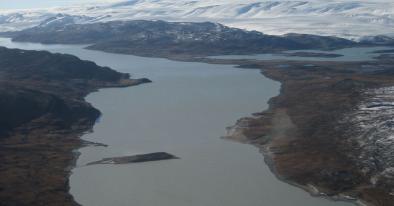Science Source
Abrupt shift in the observed runoff from the southwestern Greenland ice sheet
- States that the recent decades of accelerating mass loss of the Greenland ice sheet have arisen from an increase in both surface meltwater runoff and ice flow discharge from tidewater glaciers
- States that, despite the role of the Greenland ice sheet as the dominant individual cryospheric contributor to sea level rise in recent decades, no observational record of its mass loss spans the 30-year period needed to assess its climatological state
- Presents for the first time a 40-year (1975–2014) time series of observed meltwater discharge from a >6500-km2 catchment of the southwestern Greenland ice sheet
- Finds that an abrupt 80% increase in runoff occurring between the 1976–2002 and 2003–2014 periods is due to a shift in atmospheric circulation, with meridional exchange events occurring more frequently over Greenland, establishing the first observation-based connection between ice sheet runoff and climate change
Related Content
Science Source
| Geophysical Research Letters
Melting glaciers stimulate large summer phytoplankton blooms in southwest Greenland waters
Kevin R. Arrigo, Gert L. van Dijken, Renato M. Castelao et al
Science Source
| Geophysical Research Letters
Ice Core Records of West Greenland Melt and Climate Forcing
K. A. Graeter, E. C. Osterberg, D. G. Ferris et al
Headline

Dec 15, 2017 | Vox
Greenland's ice sheet is driving global sea level rise. One section is melting 80% faster.
Science Source
| Science Advances
Should coastal planners have concern over where land ice is melting?
Eric Larour, Erik R. Ivins, Surendra Adhikari


